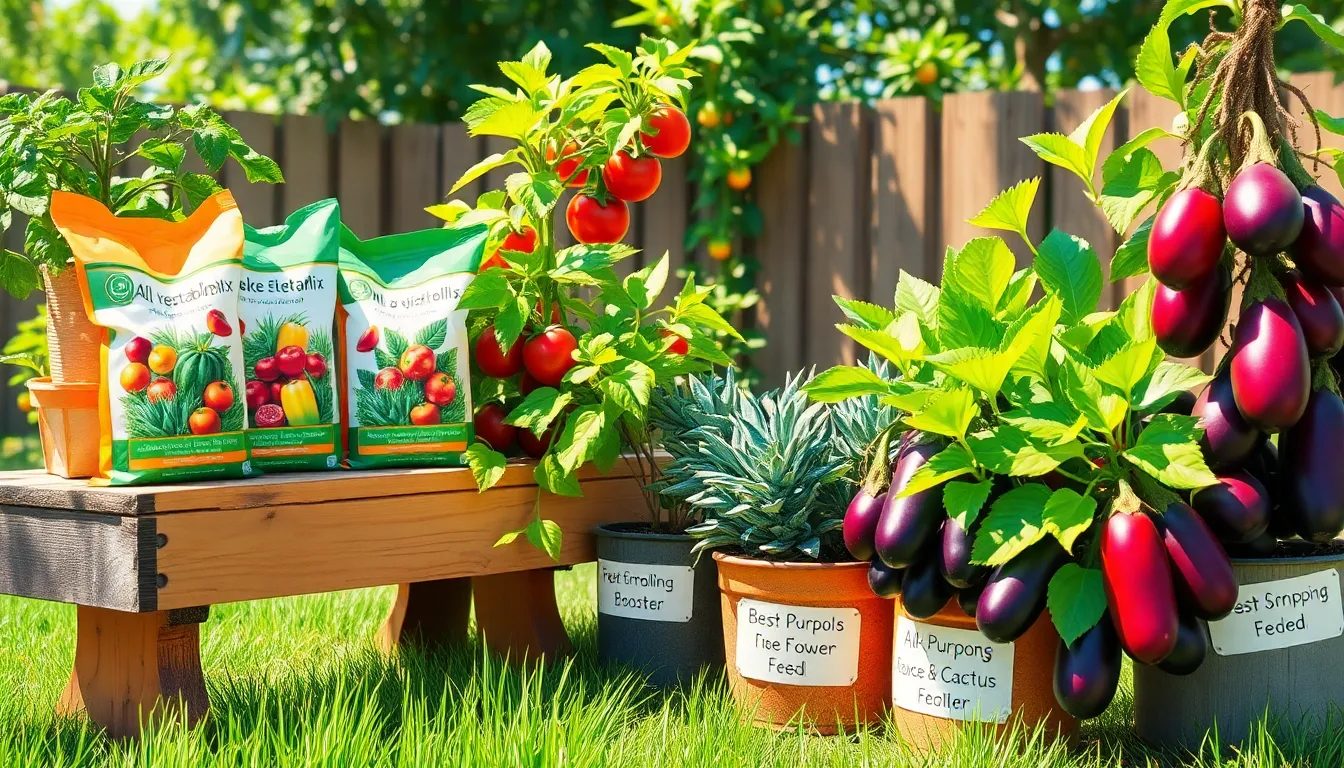Welcome to “How to Choose the Best Fertilizer for Your Garden,” where the art of nurturing your plants meets scientific precision! Whether you’re just planting your first seed or you’ve been digging in the dirt for years, this guide is your ticket to unlocking the full potential of your garden. Fertilizer is the secret ingredient that can transform your garden from ordinary to extraordinary, ensuring your plants are thriving, colorful, and productive.
For both the novice and the seasoned gardener, selecting the right fertilizer can feel like navigating a maze of choices. In this guide, we simplify the process, offering you insights and expert advice to empower you with the knowledge needed to make confident decisions. Imagine the satisfaction of seeing your garden bloom with vitality and health, all thanks to the careful consideration you give to your plants’ nutrition.
Let’s embark on this exciting journey together, as we dive into the world of fertilizers with enthusiasm and curiosity. By the end of this guide, you will not only understand what your garden needs but also enjoy the rewarding experience of watching it flourish like never before. Get ready to cultivate not just a garden, but a thriving oasis of life, bursting with the fruits of your careful, informed efforts!
Soil Test Kits (Precision Nutrient Analysis)
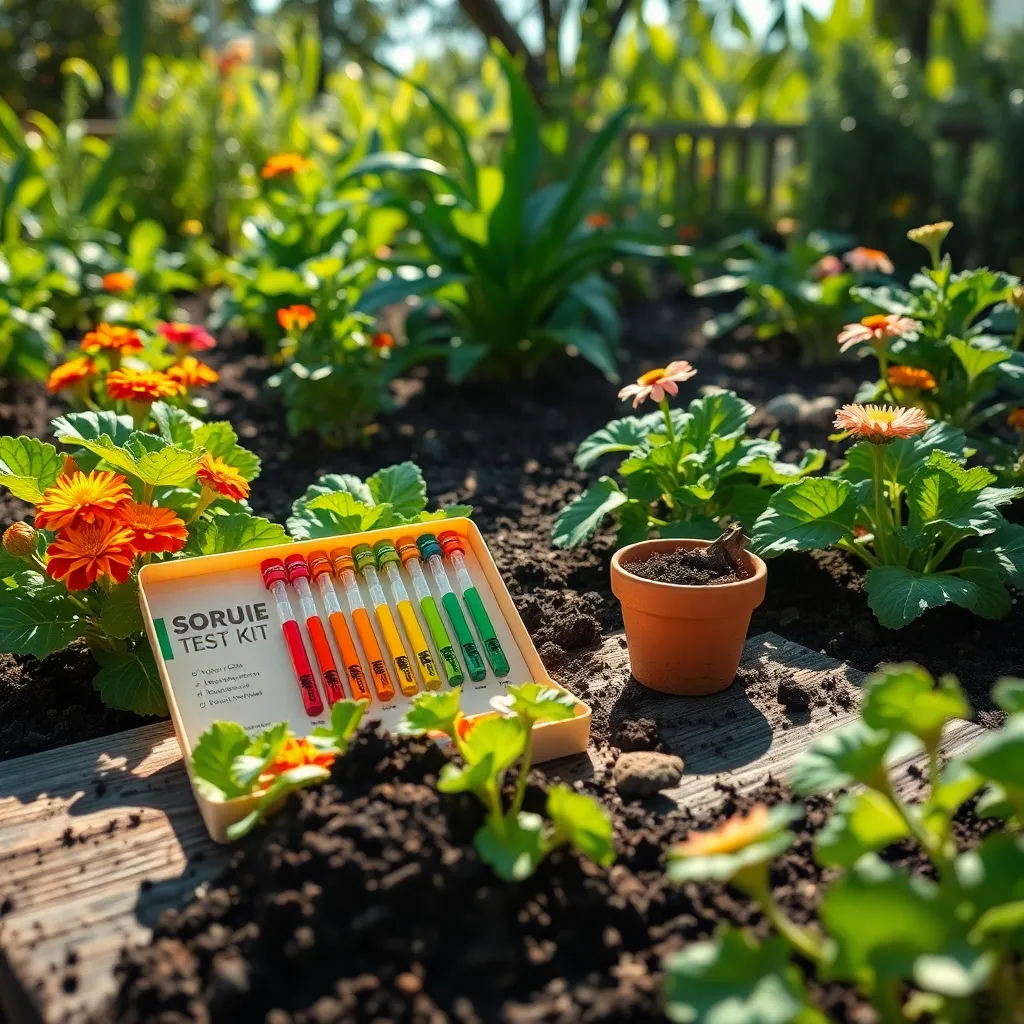
Understanding the nutrient composition of your soil is crucial for selecting the right fertilizer. Soil test kits provide a precise analysis of your soil’s pH levels and nutrient content, giving you the information you need to tailor your garden’s nutrition plan.
Investing in a soil test kit can save you both time and money by preventing over-fertilization. These kits are user-friendly, typically involving a simple process of collecting soil samples and adding them to a testing solution to obtain results within minutes.
For beginners, choosing a basic test kit that measures pH, nitrogen, phosphorus, and potassium is often sufficient. Advanced gardeners may opt for more comprehensive kits that provide additional insights into micronutrients like calcium and magnesium, which are essential for optimal plant health.
Once you have your soil test results, you can make informed decisions about which type of fertilizer to purchase. If your soil is low in nitrogen, for example, consider using a high-nitrogen fertilizer to encourage leafy growth, particularly for vegetables like lettuce and spinach.
Compost Tumblers (Eco-Friendly Fertilizer Creation)
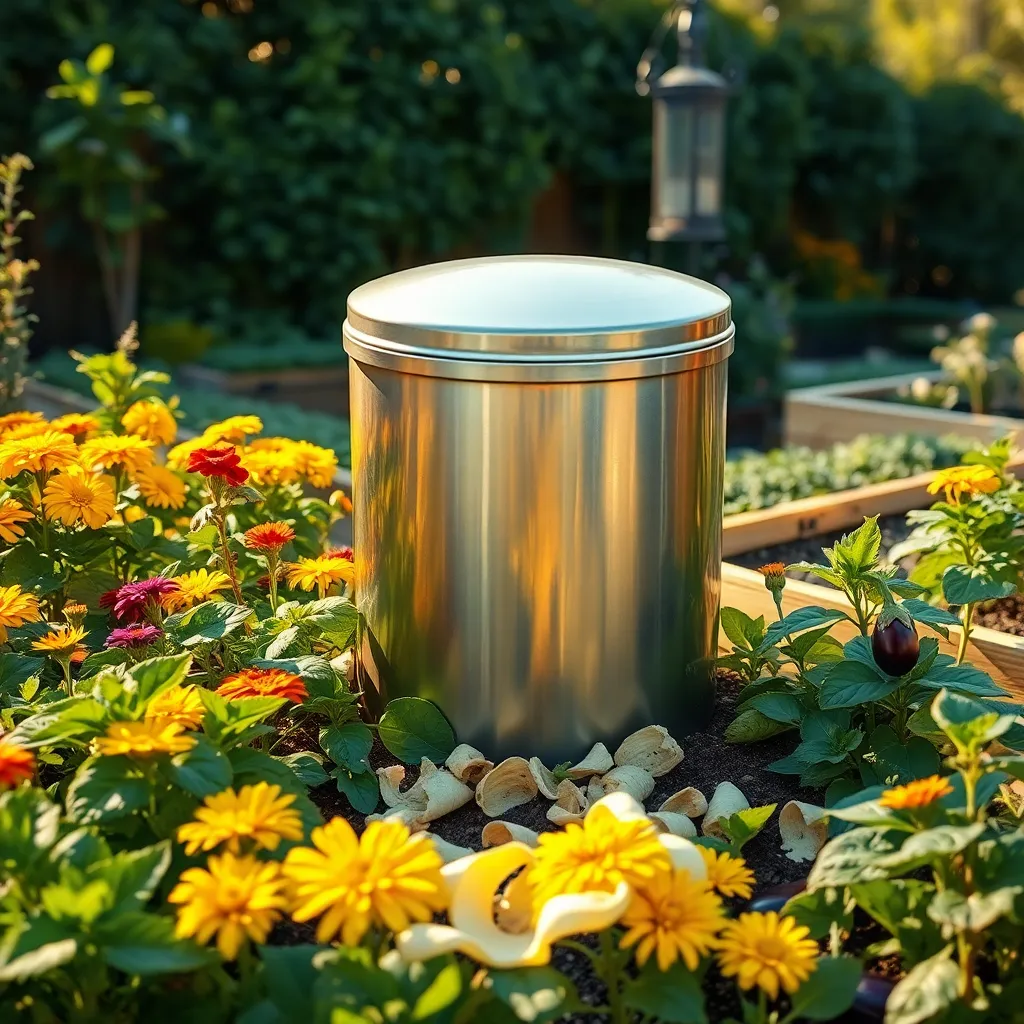
Compost tumblers are an excellent tool for creating eco-friendly fertilizer right in your backyard. By using a tumbler, you can turn kitchen scraps and garden waste into rich, nutrient-dense compost with minimal effort.
To get started, fill your compost tumbler with a balanced mix of “green” and “brown” materials. Green materials include fresh grass clippings and vegetable scraps, while brown materials consist of dried leaves and twigs.
Regularly turning the tumbler is crucial for effective composting, as it aerates the pile and accelerates decomposition. Aim to turn the tumbler every two to three days to maintain optimal conditions for microbial activity.
For those new to composting, a simple guideline is to maintain a ratio of about 2:1 browns to greens. Advanced gardeners can fine-tune this balance based on the specific needs of their plants and the climate.
After a few weeks of diligent tumbling, you’ll notice the contents transforming into dark, crumbly compost. This homemade fertilizer can be mixed into garden soil to improve its structure and nutrient content, promoting healthier plant growth.
Organic Fertilizer Spikes (Slow-Release Nutrition)
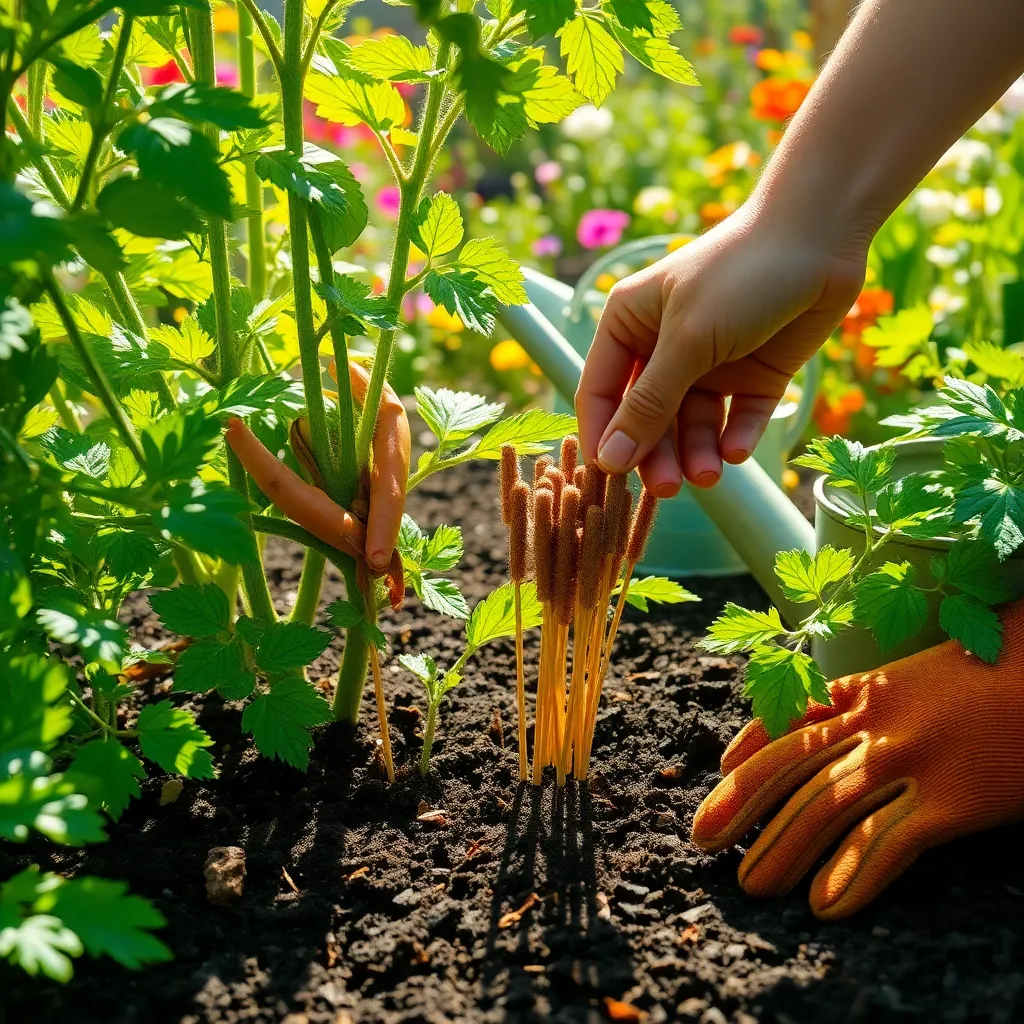
Organic fertilizer spikes provide a convenient way to deliver slow-release nutrition directly to your plants’ root zones. These spikes are perfect for gardeners who want to minimize maintenance while ensuring their plants receive consistent nourishment.
To use organic fertilizer spikes effectively, insert them into the soil around the drip line of your plants, usually once every six to eight weeks. Ensure the spikes are pushed deep enough into the soil to avoid exposure to sunlight, which can degrade their nutrients.
Choosing the right type of organic spikes depends on the specific needs of your plants. For flowering plants, look for spikes with higher phosphorus content to promote abundant blooms.
Advanced gardeners can optimize results by testing soil pH and nutrient levels before selecting their spikes. This ensures that the chosen spikes complement existing soil conditions rather than disrupt them.
Liquid Seaweed Extract (Micronutrient Boost)
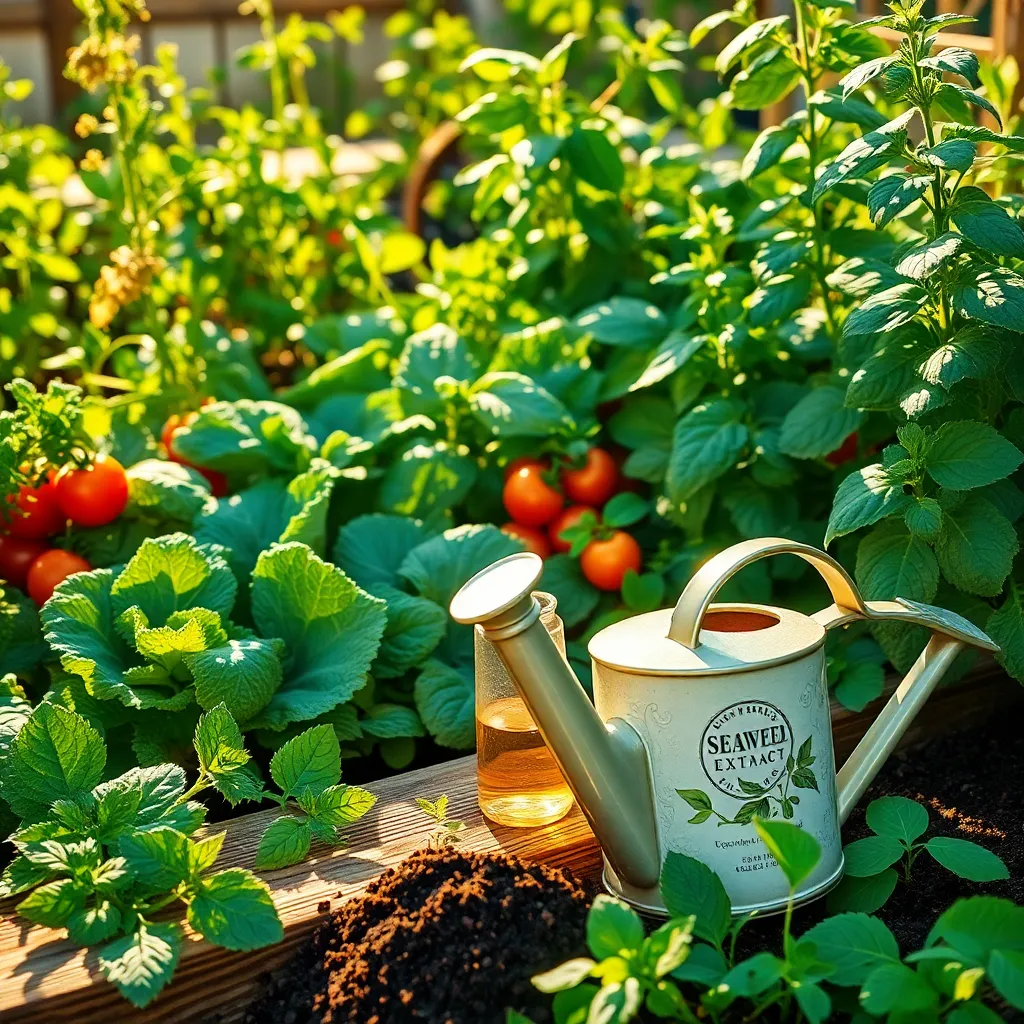
Liquid seaweed extract is an excellent choice for gardeners looking to give their plants a micronutrient boost. This organic solution is rich in essential elements like potassium, magnesium, and trace minerals that promote healthy plant growth.
Consider using liquid seaweed extract for its versatility; it can be applied as a foliar spray or directly to the soil. For the best results, dilute the extract according to the package instructions and apply every two to four weeks during the growing season.
For beginners, it’s important to start with a low concentration to avoid over-fertilizing. More experienced gardeners might experiment with combining seaweed extract with other organic fertilizers to enhance nutrient availability.
Applying liquid seaweed extract can also improve plant resilience to stressors such as drought and disease. By boosting the plant’s natural defenses, gardeners can expect stronger, more vibrant growth across a variety of plant types, including vegetables, flowers, and shrubs.
pH Meter (Accurate Soil Acidity Measurement)
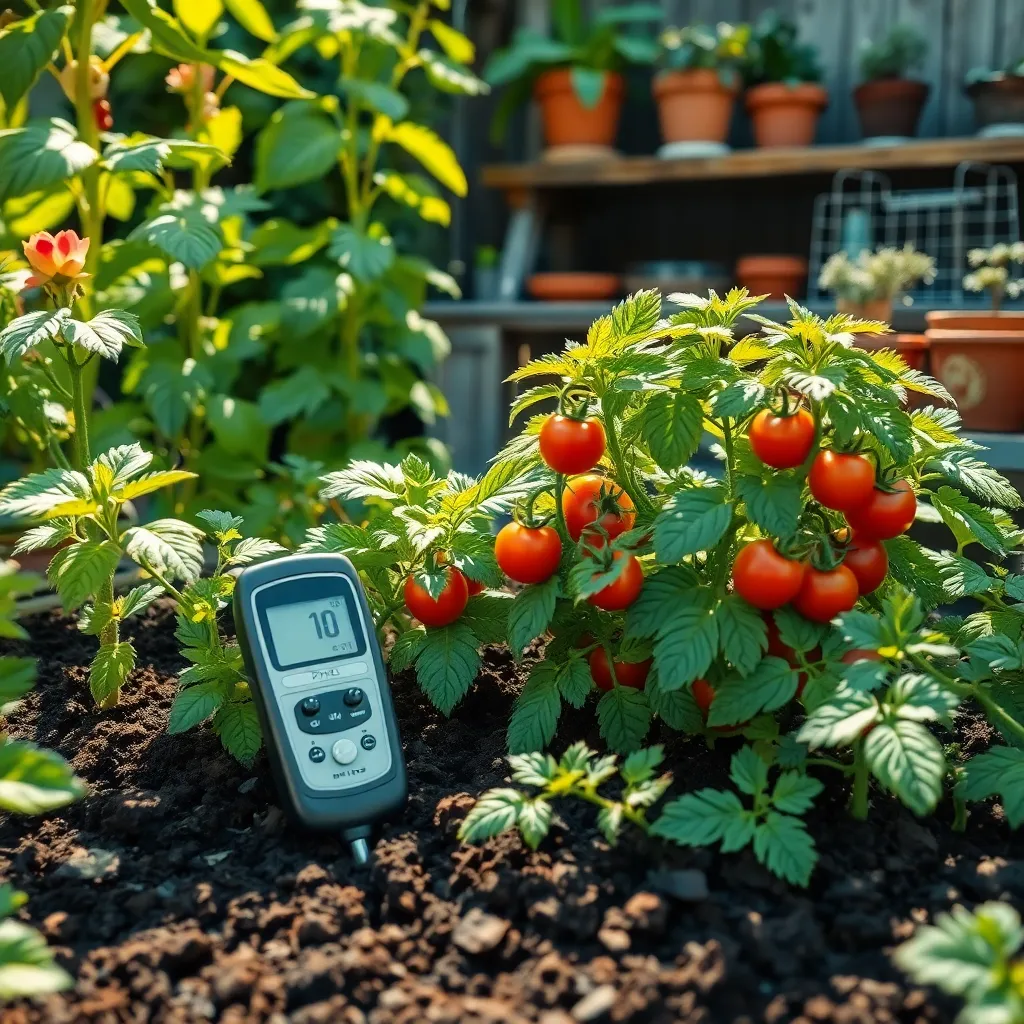
Understanding the soil acidity in your garden is crucial for choosing the right fertilizer, and a pH meter is an invaluable tool for this task. It provides an accurate measurement of soil pH, allowing you to tailor your soil amendments effectively.
To use a pH meter, insert the probe into the soil at root level and wait for the reading. Ensure that the soil is moist, as dry soil can lead to inaccurate readings, potentially skewing your fertilization plans.
For those new to gardening, a pH range of 6.0 to 7.0 is generally suitable for most plants, with some exceptions like blueberries and azaleas, which prefer more acidic conditions. Regularly checking your soil’s pH can help you maintain the ideal conditions for your plants, improving their health and yield potential.
Advanced gardeners may benefit from using a pH meter in combination with other soil testing tools to get a comprehensive view of soil health. This approach allows for more precise adjustments, such as adding lime to raise pH or sulfur to lower it, fostering an environment where plants can thrive.
Conclusion: Growing Success with These Plants
In nurturing any relationship, like cultivating a thriving garden, choosing the right “fertilizer” is key. This article explored five essential concepts: understanding your partner’s love language, maintaining open communication, setting boundaries, fostering mutual growth, and prioritizing quality time together. Each element acts as a vital nutrient, enriching your relationship’s soil and ensuring it flourishes.
Your actionable next step is to initiate a heartfelt conversation with your partner today, focusing on one of these concepts. This small yet significant action can pave the way for deeper connection and understanding.
As you embark on this journey towards a healthier relationship, remember to save or bookmark this article. It will serve as a valuable guide on your path to relationship success, offering insights and strategies whenever you need them.
Looking ahead, by consistently applying these principles, you’re not just tending to the present but sowing seeds for a resilient and joyful future together. Embrace this opportunity to grow together, and let the love you nurture today blossom into a beautiful and enduring relationship.

